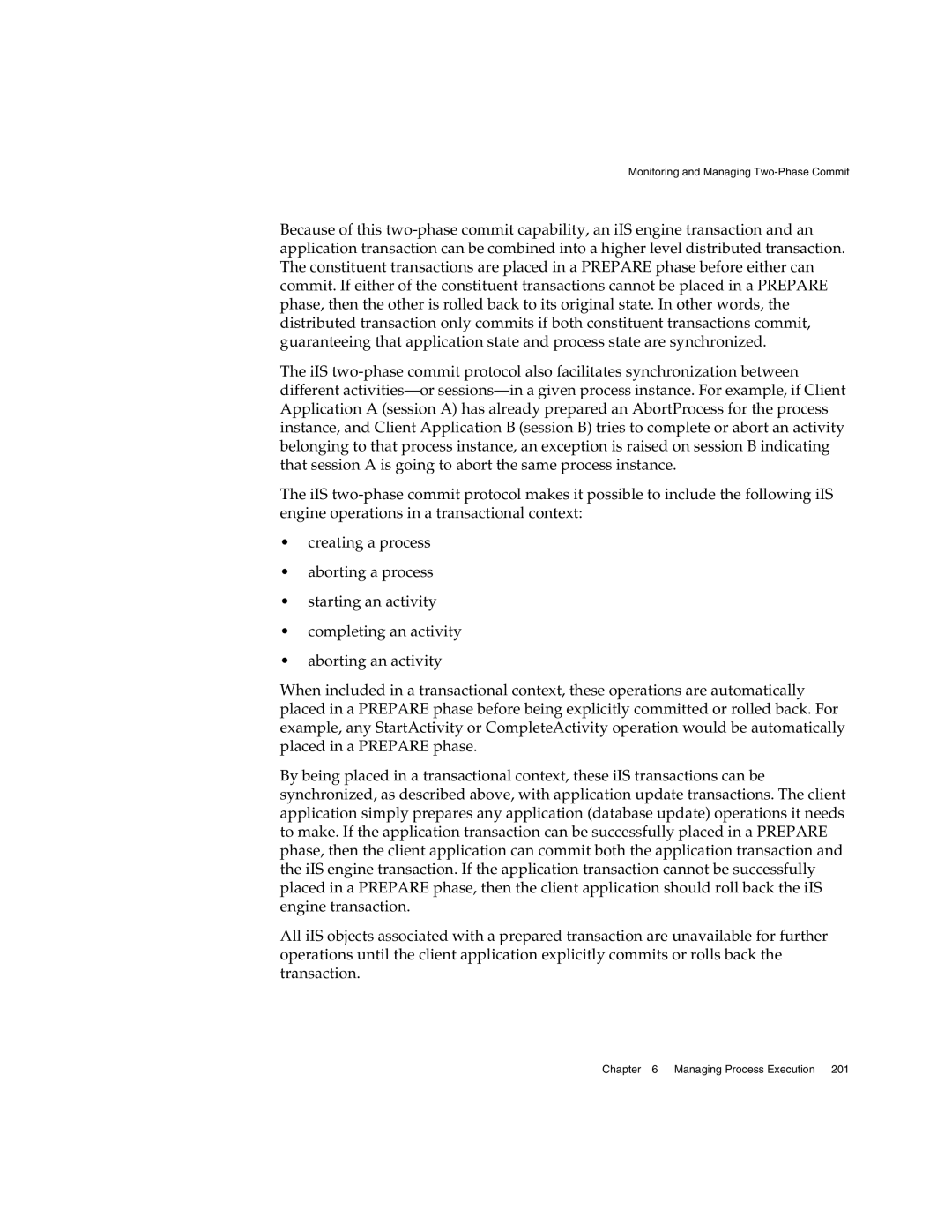Monitoring and Managing Two-Phase Commit
Because of this
The iIS
The iIS
•creating a process
•aborting a process
•starting an activity
•completing an activity
•aborting an activity
When included in a transactional context, these operations are automatically placed in a PREPARE phase before being explicitly committed or rolled back. For example, any StartActivity or CompleteActivity operation would be automatically placed in a PREPARE phase.
By being placed in a transactional context, these iIS transactions can be synchronized, as described above, with application update transactions. The client application simply prepares any application (database update) operations it needs to make. If the application transaction can be successfully placed in a PREPARE phase, then the client application can commit both the application transaction and the iIS engine transaction. If the application transaction cannot be successfully placed in a PREPARE phase, then the client application should roll back the iIS engine transaction.
All iIS objects associated with a prepared transaction are unavailable for further operations until the client application explicitly commits or rolls back the transaction.
Chapter 6 Managing Process Execution 201
